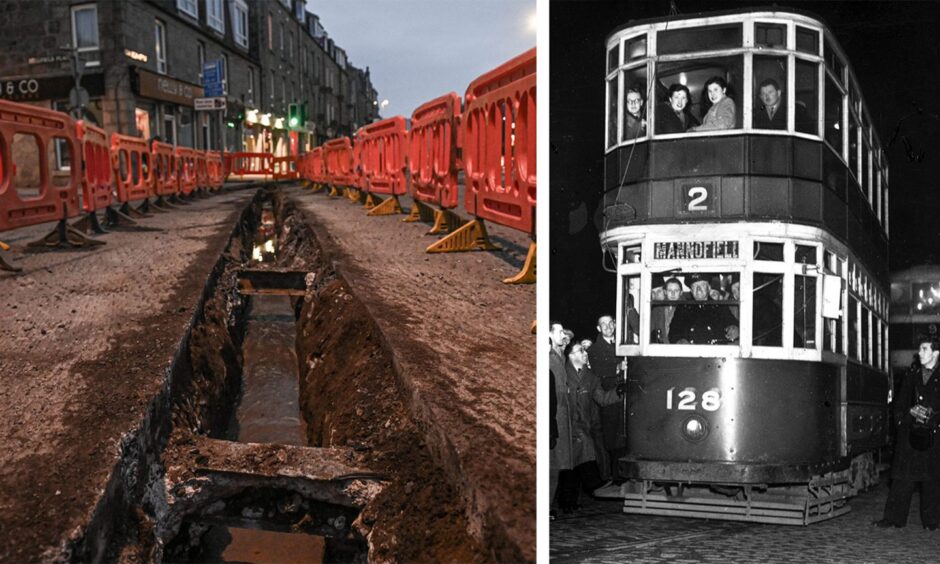
Tramlines from one of Aberdeen’s tramway routes have been uncovered for the first time in decades after being dug up during roadworks.
Workers resurfacing the carriageway on Holburn Street were surprised to uncover part of Aberdeen’s transport history last week.
It’s a rare glimpse of the tramway, as lots of Aberdeen’s tramlines were famously ripped up after the trams were burned in 1958.
When the workers dug a channel on Holburn Street at the entrance to Nellfield Place, they found the original rails buried below the road surface.
The tracks were made of steel girders, and typically measured 6-7 inches in depth.
Tracks are remains of lost tramway
The tracks are believed to be part of the Bridges tram route, running down Holburn Street in Aberdeen.
Photos of the roadworks show the parallel tracks near Nellfield Place.
The horse-drawn Bridges route opened in 1883 and initially linked Market Street with Bloomfield Road.
Expansion saw the route stretch to Bridge of Don in 1892 and the Dee two years later.
It was the final tramway to go in 1958.
But Aberdeen’s number 1 and 2 buses still follow the former tram route today.
Join us as we take a look at Aberdeen’s fascinating tram heritage, through the history of another tramline which ran just up the road from the tracks uncovered under Holburn Street this week…
Earlier Mannofield route ran nearby
The nearby Mannofield tramway was an earlier addition to the city and linked the community with Holburn Street.
It opened on September 1 1880 as a horse-drawn route running from Market Street to Holburn Street then Mannofield Church terminus.
The Mannofield Depot was just along the street at Morningside Road, where Tesco Express is now.
An unusual feature of Aberdeen’s tram network was that each route was run as a separate entity with its own trams, horses and depots.
But in 1896, the tramways were electrified and the Mannofield tramrails were laid into the road surface.
The tramway then ran from Mannofield terminus to Castle Street.
As the West End suburbs of Aberdeen continued to sprawl in the late 19th and early 20th centuries, the tramways were seen as a huge asset to the communities.
When property was marketed, the sales material would often say how many minutes’ walk houses in Craigiebuckler were from the Mannofield tramway.
In 1922, it even featured in an unrelated newspaper report about Airyhall Mansion burning down, even though the Mannofield tramway was one mile from the estate.
Trams proved popular in growing city
Before buses were king, Aberdeen’s trams were a popular and well-used method of travel.
On July 20 1920, a particularly sunny summer’s day, Aberdeen Tramway Corporation reported a record number of passengers on its tram network.
General manager Mr Forbes said they had taken 50,000 people by tram to Aberdeen Beach between the hours of 4pm and 6pm alone. The beach bonanza also saw record takings estimated to be £1000 (the equivalent of £36,000 today).
Despite the tramways’ successes, the council cited lack of maintenance of the trams and tracks during the First World War as a reason to open up routes to buses in 1921.
But still the trams trundled along.
Plans were submitted in 1925 to extend the small Mannofield Depot to accommodate a further 36 tram cars.
The city’s fleet was serviced at Mannofield Depot where they could manufacture new wheels and had a jack for lifting trams from the tracks.
Motorbuses competed with Aberdeen’s trams
And the 1930s became a bit of a golden era for Aberdeen’s trams, as the fleet and tramlines were brought back to their pre-war condition.
In fact, it was reported that Aberdeen’s tramways “reached a very high standard of maintenance and operation, which was probably unrivalled in Great Britain” at that time.
In 1936, the council acquired a further 18 trams from Nottingham, but within three years there were more buses than trams in Aberdeen.
And ultimately the Mannofield depot became the base for the council’s bus fleet – it was a sign of the times for the trams.
The immediate post-war policy was to retain Aberdeen’s trams, and of all the systems in Britain its future was thought to be the most secure.
But in 1950, it was announced that the Mannofield tram service would be withdrawn on March 3 1951.
And there was a bigger shock in 1954 when “almost without warning” the Rosemount routes were shut down.
Geordie Ingram drove Mannofield tram for nearly 25 years
One of the last – and longest-serving – drivers on the Mannofield tramline was George “Geordie” Ingram.
He had served as a driver for Aberdeen Corporation Tramways for nearly 35 years and hoped to mark 25 years’ service on the Mannofield route in 1951 before retiring in November.
But unfortunately, the Mannofield tram was to cease a few months short of Geordie’s silver anniversary.
Geordie began working as a tram driver in 1917 when he was discharged from the army after being wounded on the frontline in the First World War.
He had successfully driven his tram through air raids, storms and the black out unscathed, but ultimately it was the motorbus that would derail him.
Lamenting the loss of tramway
Speaking to the Evening Express in 1951, Geordie explained how wartime driving came with its pitfalls.
He said: “I thocht I could dae the Mannofield run blindfold, but I yince got lost wi’ my tram on Union Street.
“It wis the time o’ the blackoot during the war. There wis sic a thick fog that twa passengers collided when een wis gettin’ aff and t’ither on.
“I couldna see a thing. Somewhere atween Mannofield and Castlegate I lost ma way.
“It wisna till I cam tae the crossin’ at the auld Palace Hotel that I recognised the track.”
Geordie said he was sad to see Aberdeen’s trams going out of fashion.
He said: “For one thing, the passengers will feel the rub wi’ buses instead o’ trams. The buses are more expensive to run.
“I could run ma tram on the same wheels for two years but a Corporation bus I know of has had three pairs o’ tyres in six months.”
Trams ‘usurped by vulgar bus’
He wasn’t the only person upset by the closure of the Mannofield tramway.
An Evening Express editorial written by Peter Chambers in 1951 was not hugely complimentary about the buses set to replace Mannofield’s trams.
He said: “Within a few weeks, the Mannofield tramway service will have been usurped by the vulgar, blundering bus, a vehicle without tradition, notorious for the ill-bred manner in which it shoulders its way through traffic.
“Poor old tram! The march of our mechanised civilisation is passing you by.”
‘The cheerful screech and clank of the passing tram has been forever stilled’
Rather prophetically, he warned it would not end with the number 2 route.
He said: “Soon trams will have gone forever from our towns.
“Children, poring over an old photograph album some wet Sunday afternoon, will come across a picture of Union Street crowded with trams, and for them it will be a sight as strange and monstrous as that old brown snapshot of great-uncle Albert with his penny-farthing and beaver hat.”
Mr Chambers was not wrong, a mere seven years later there was a funeral procession of Aberdeen’s trams before they were unceremoniously cremated at Aberdeen Beach.
He added: “All the best histories are written long after the event. When the cheerful screech and clank of the passing tram has been forever stilled, perhaps some worthy person will write a history of the Aberdeen Tramway Service.”
If you enjoyed this, you might like:
- Previously unseen photos of Aberdeen’s lost trams revealed
- In photos: How the 1970s changed Union Street forever, year by year
- Pancakes, pubs and Crown Street Post Office: Photos of March days in Aberdeen over years
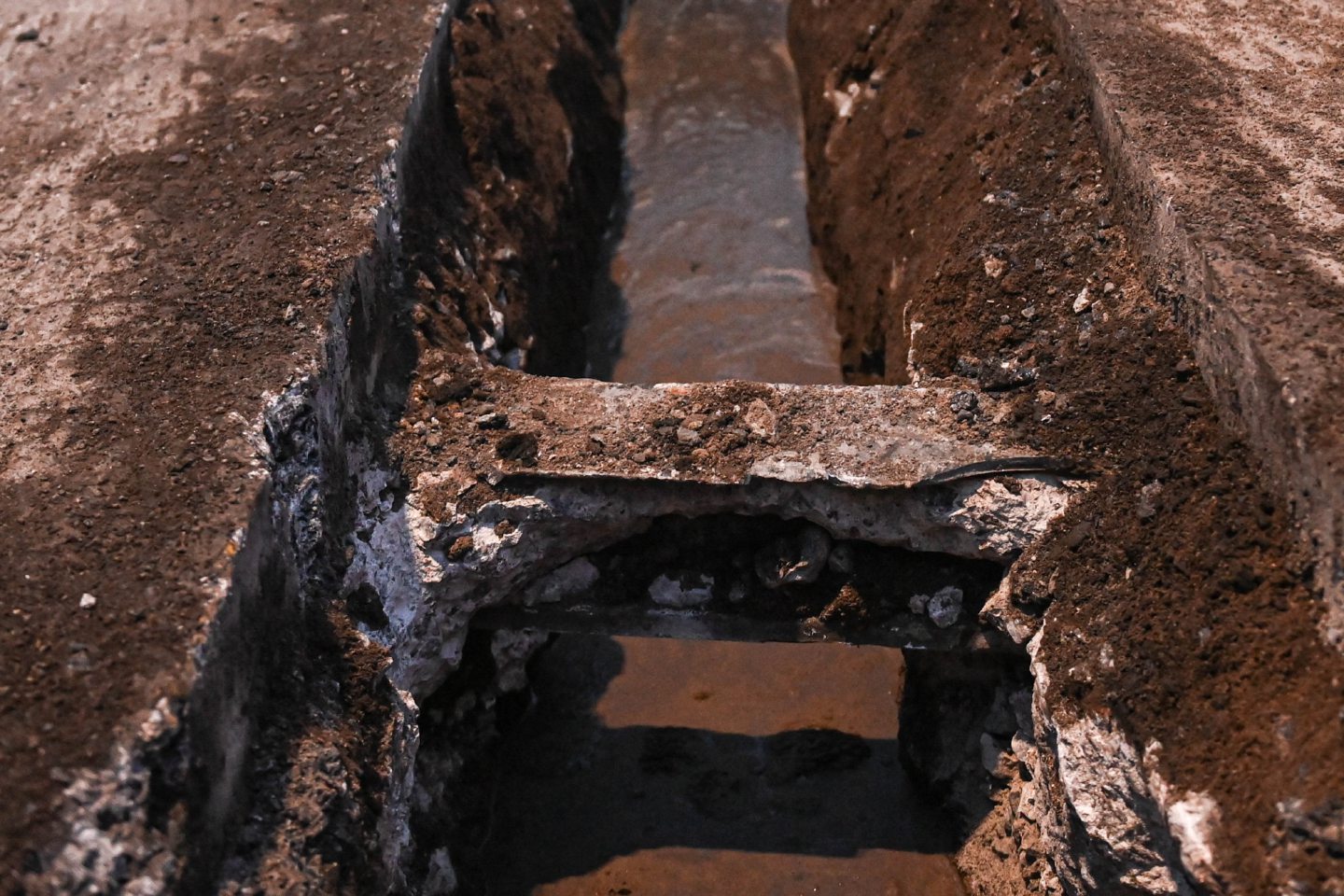
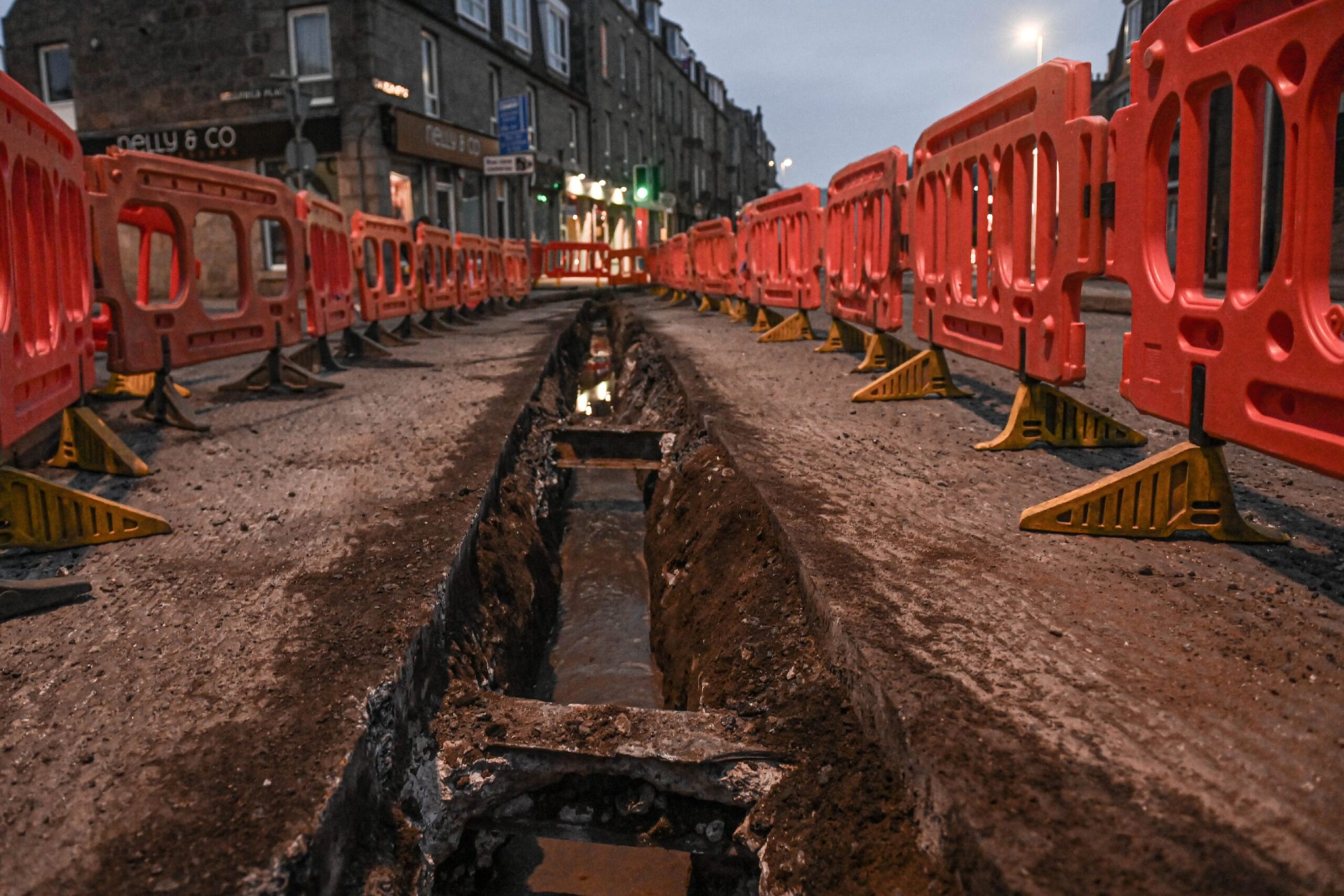


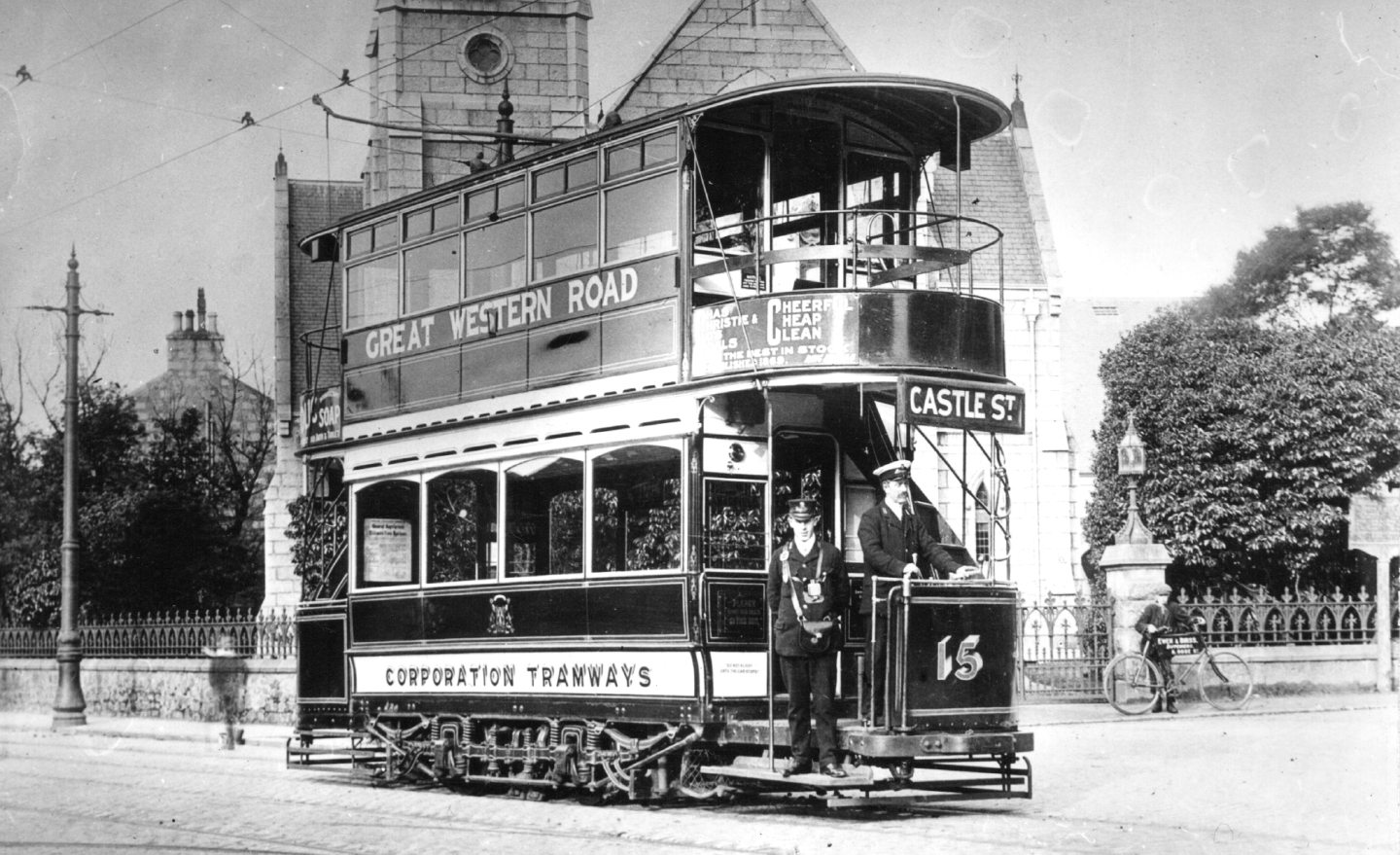
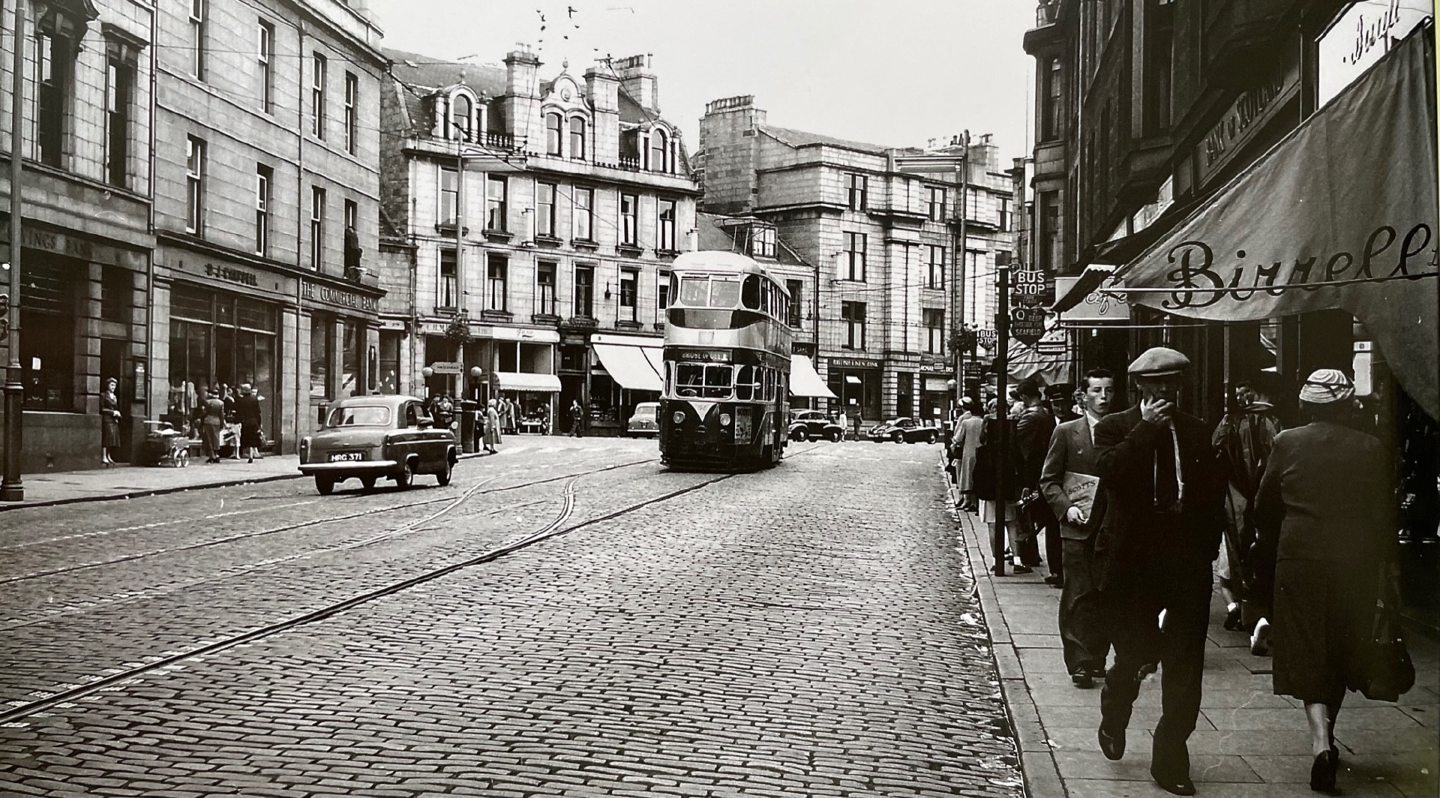


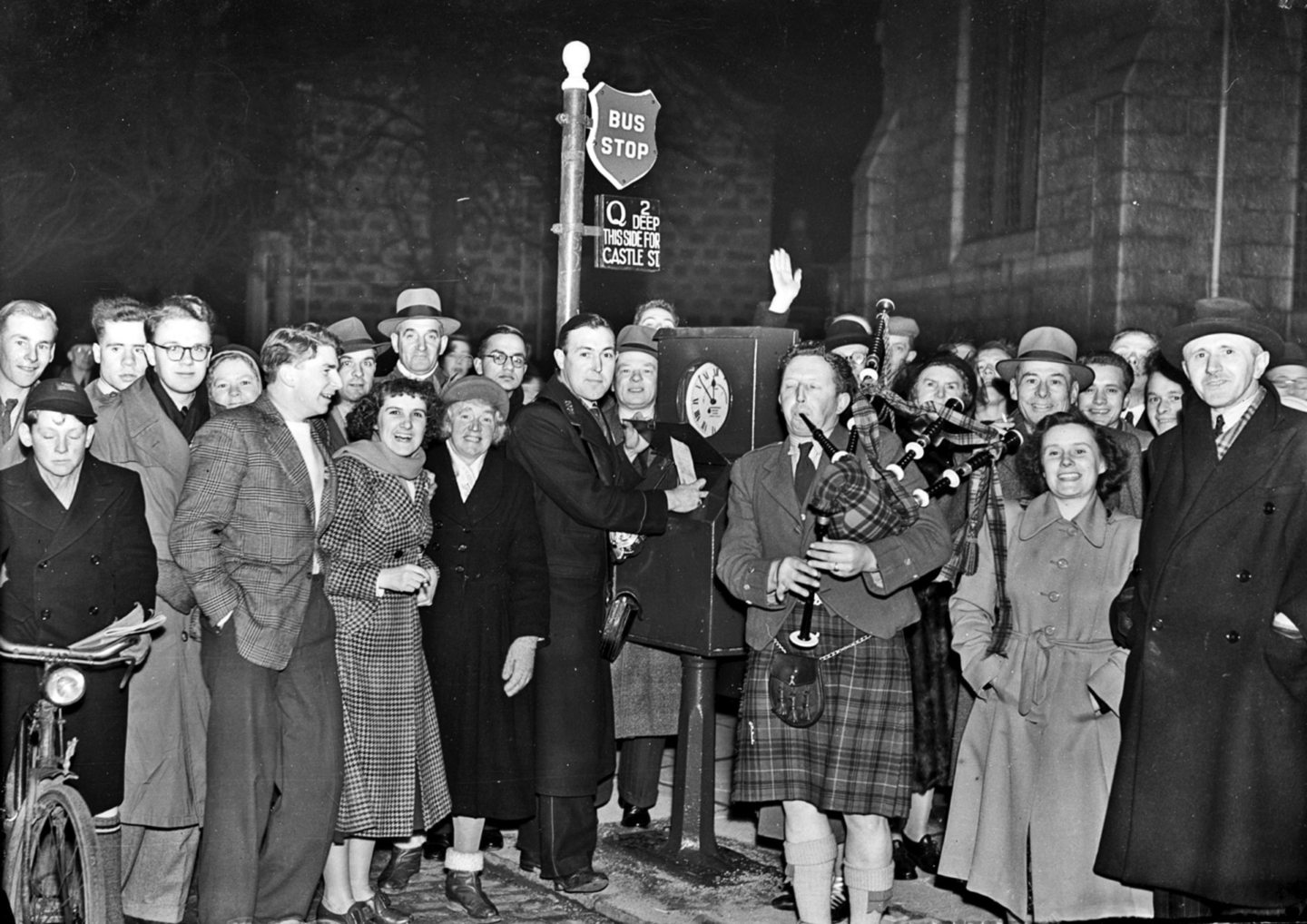
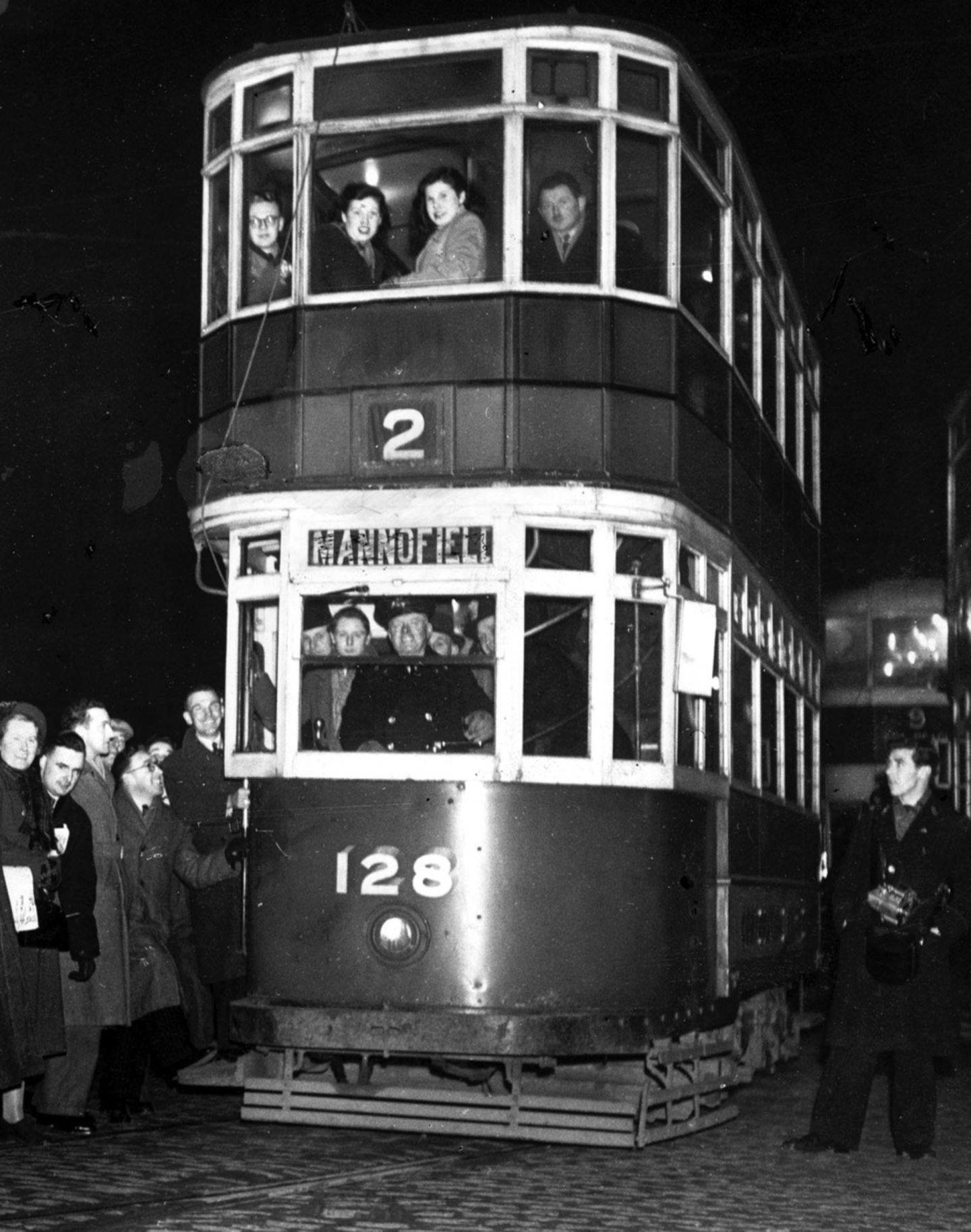
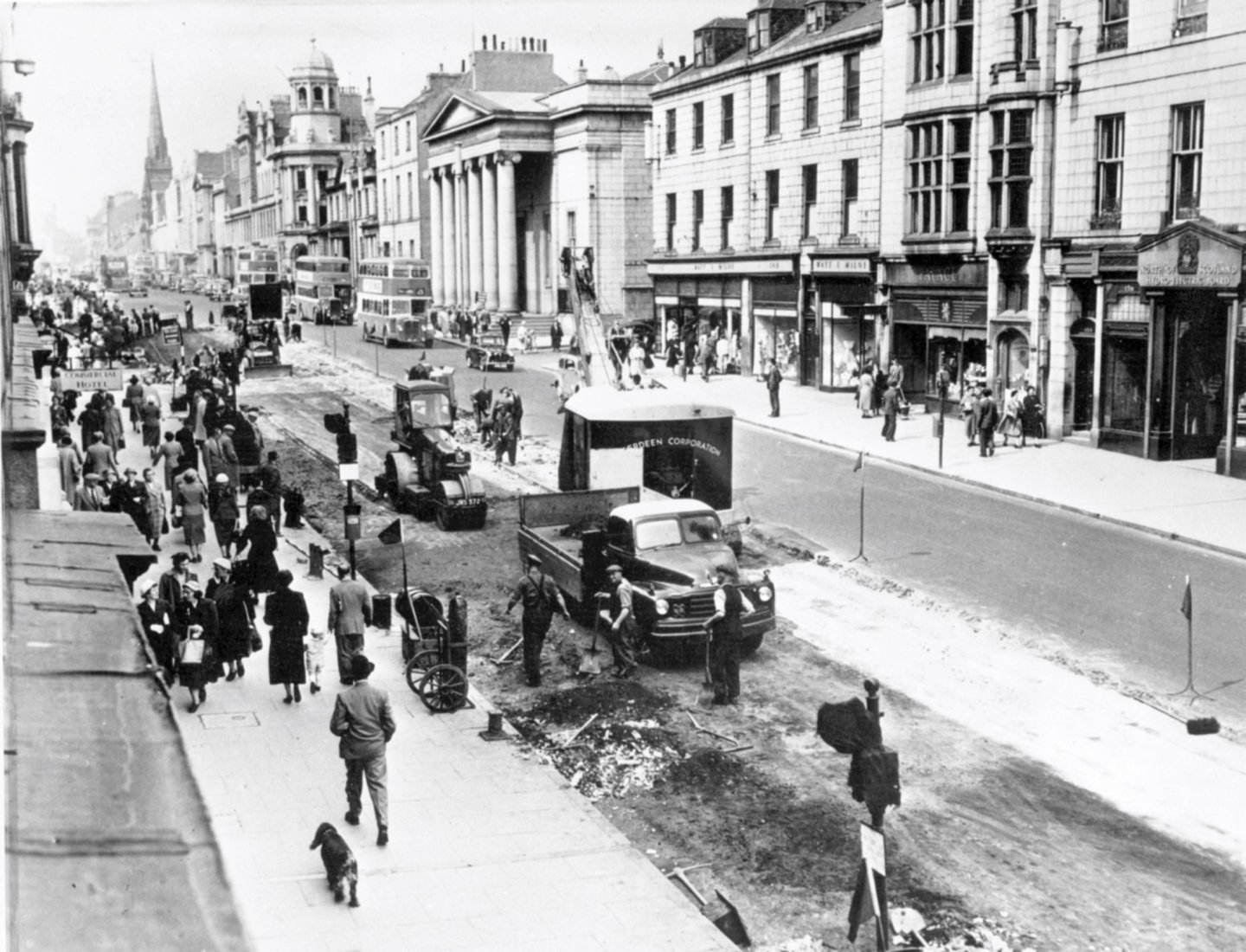

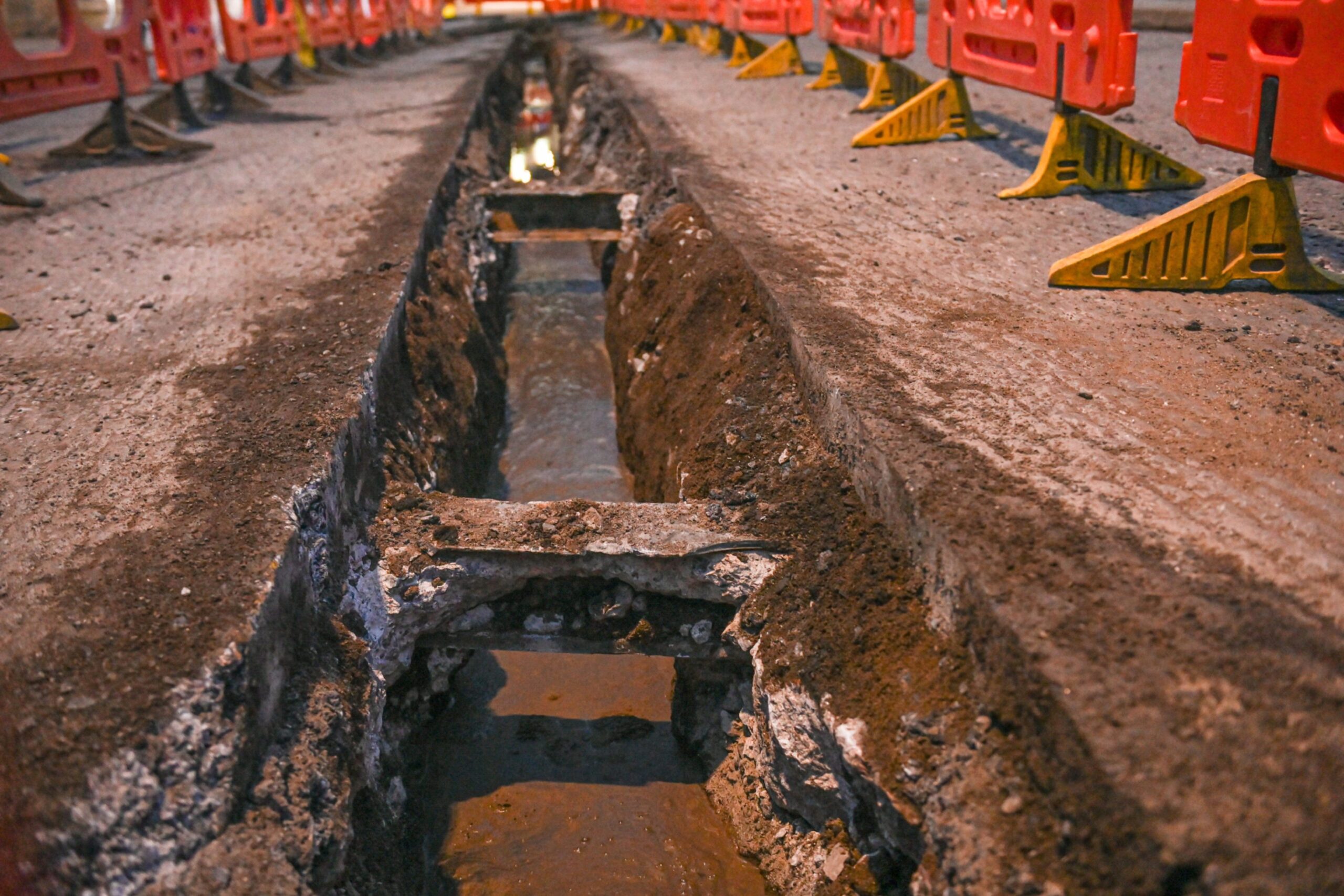
Conversation